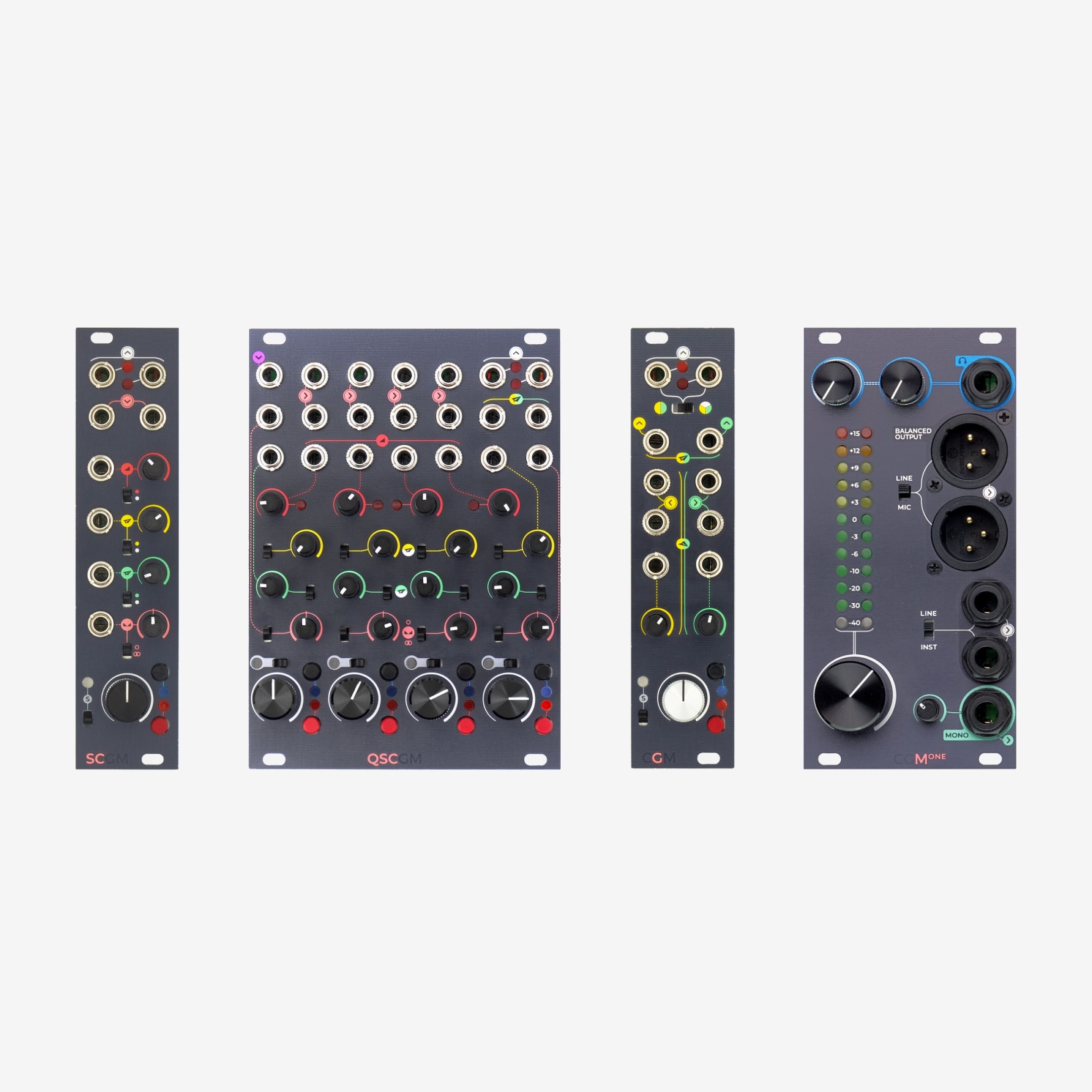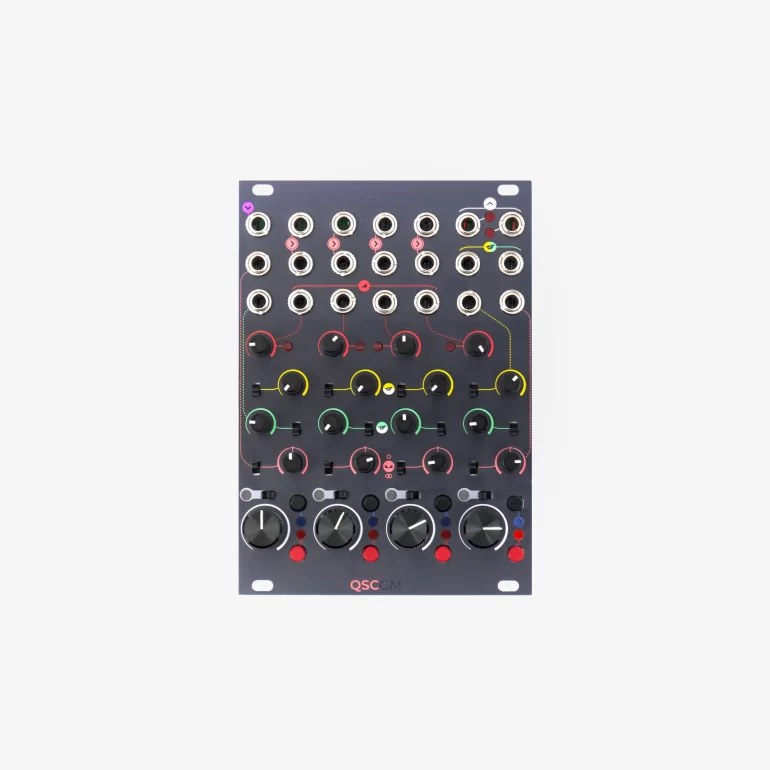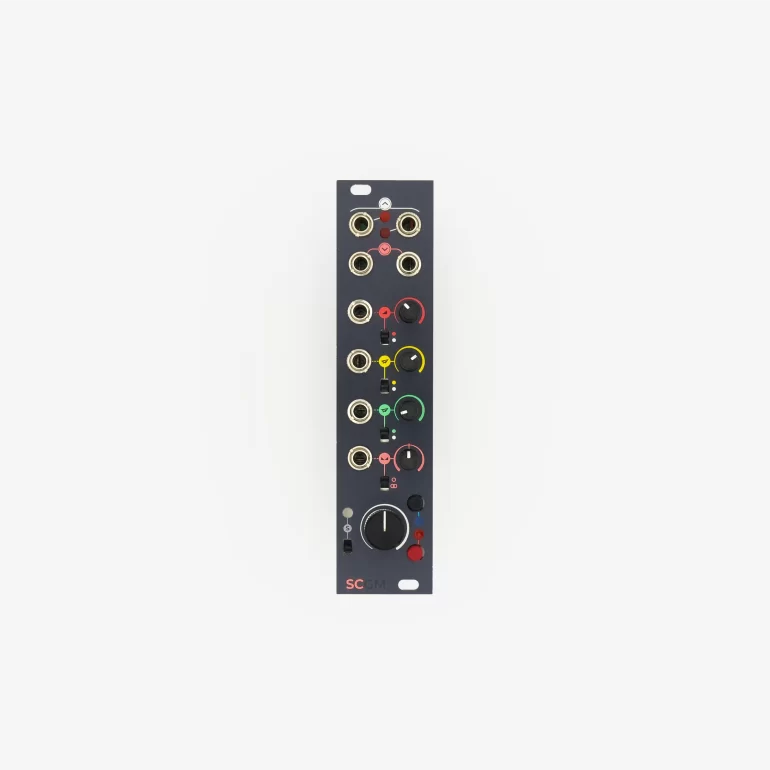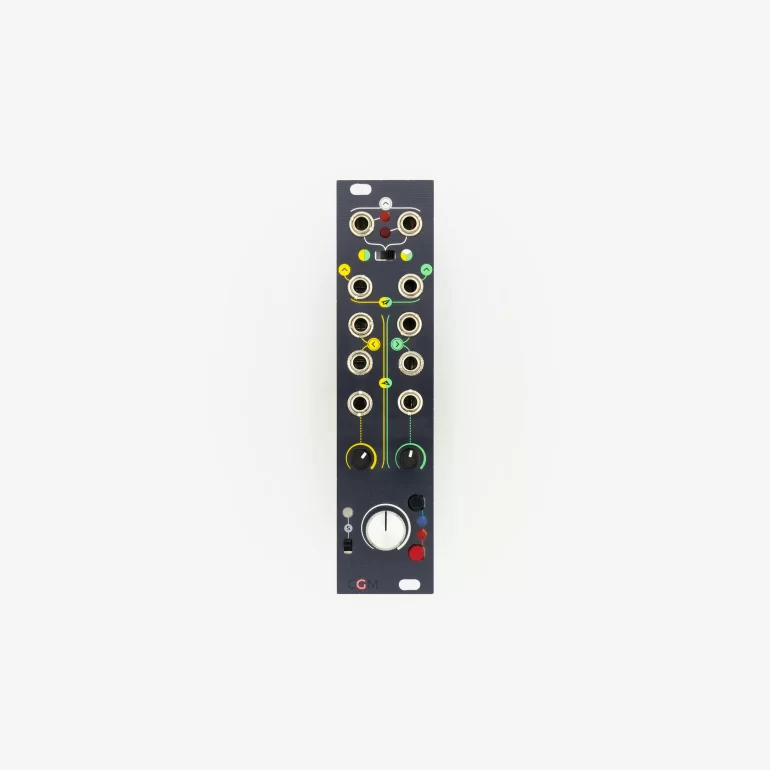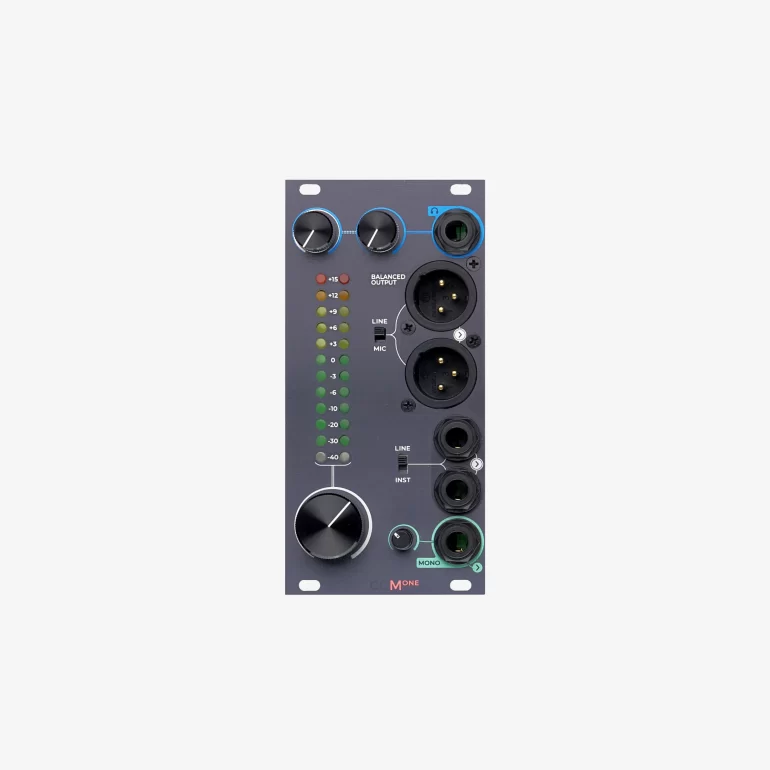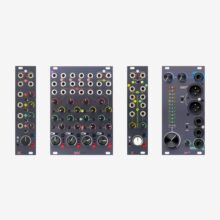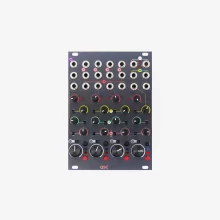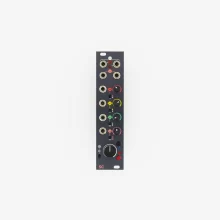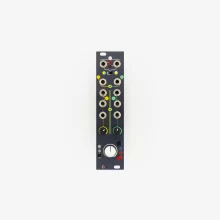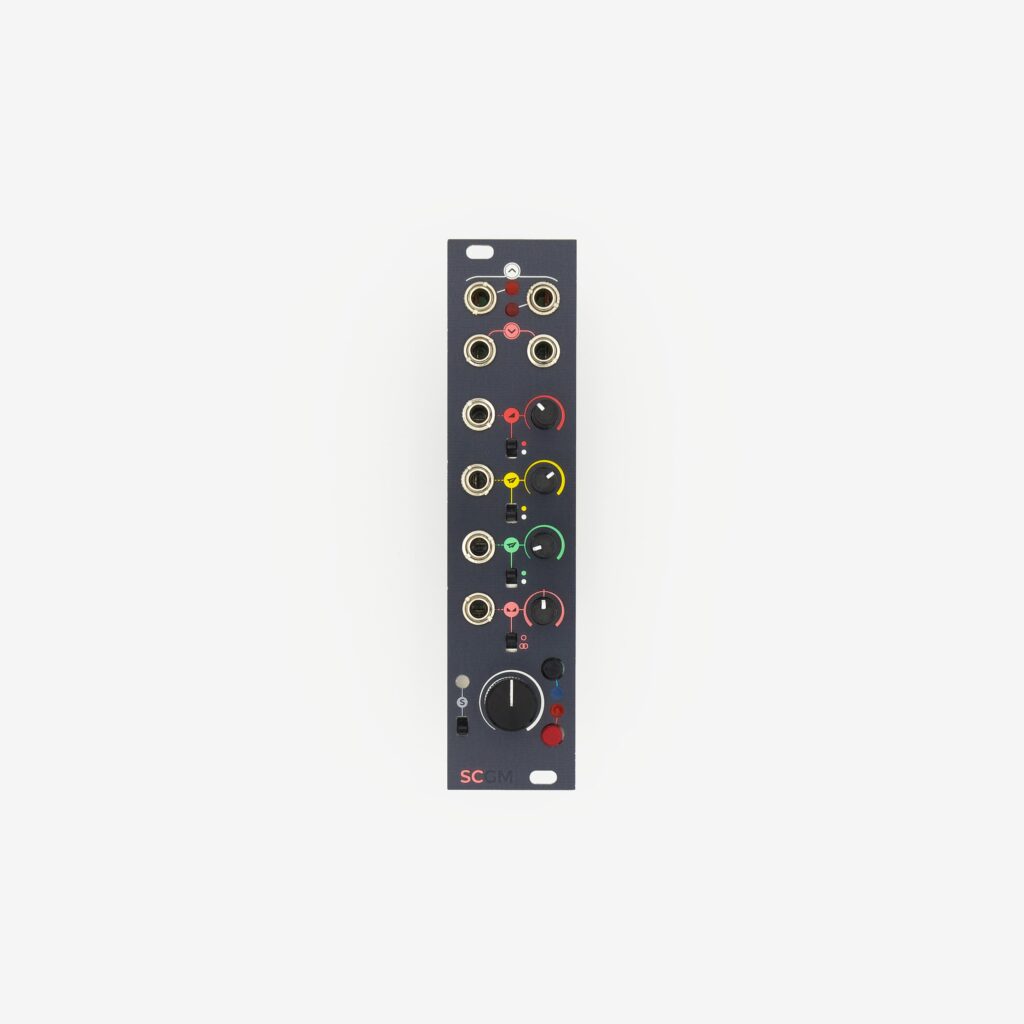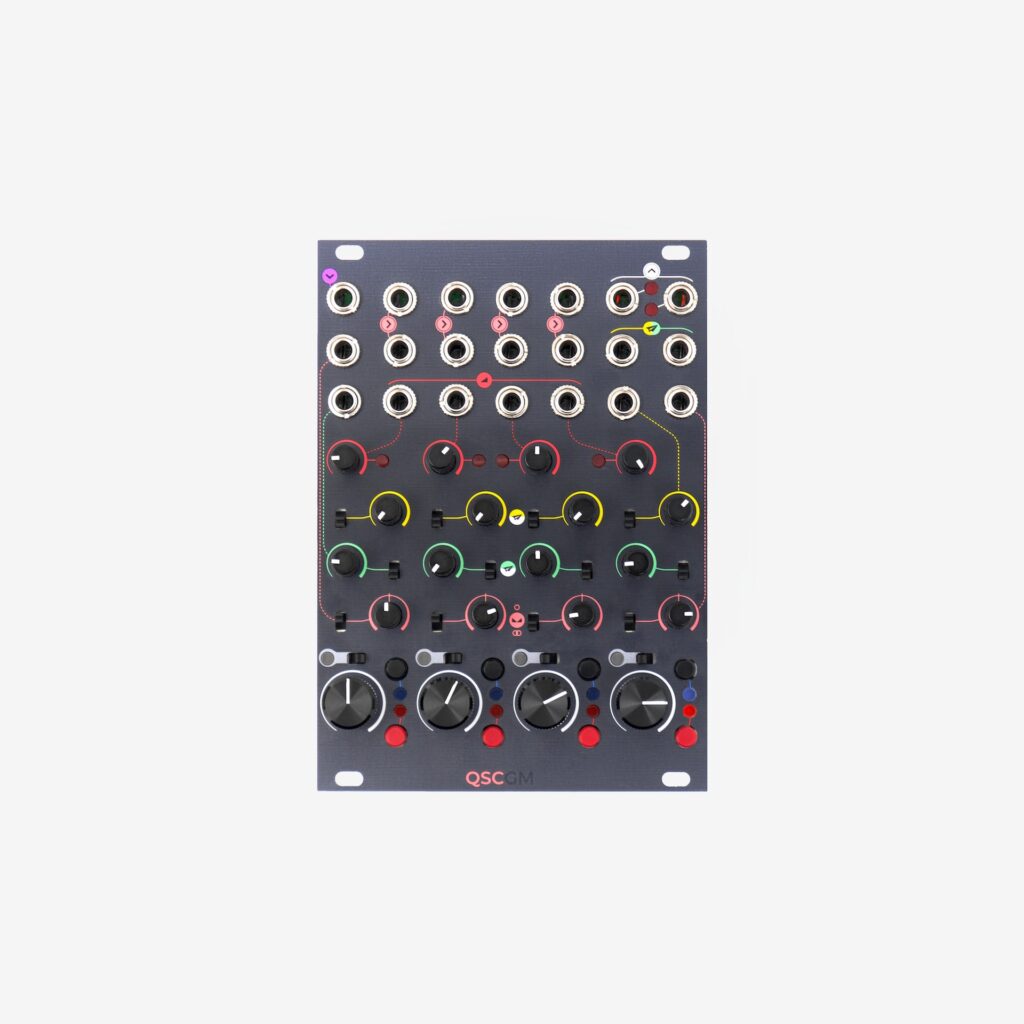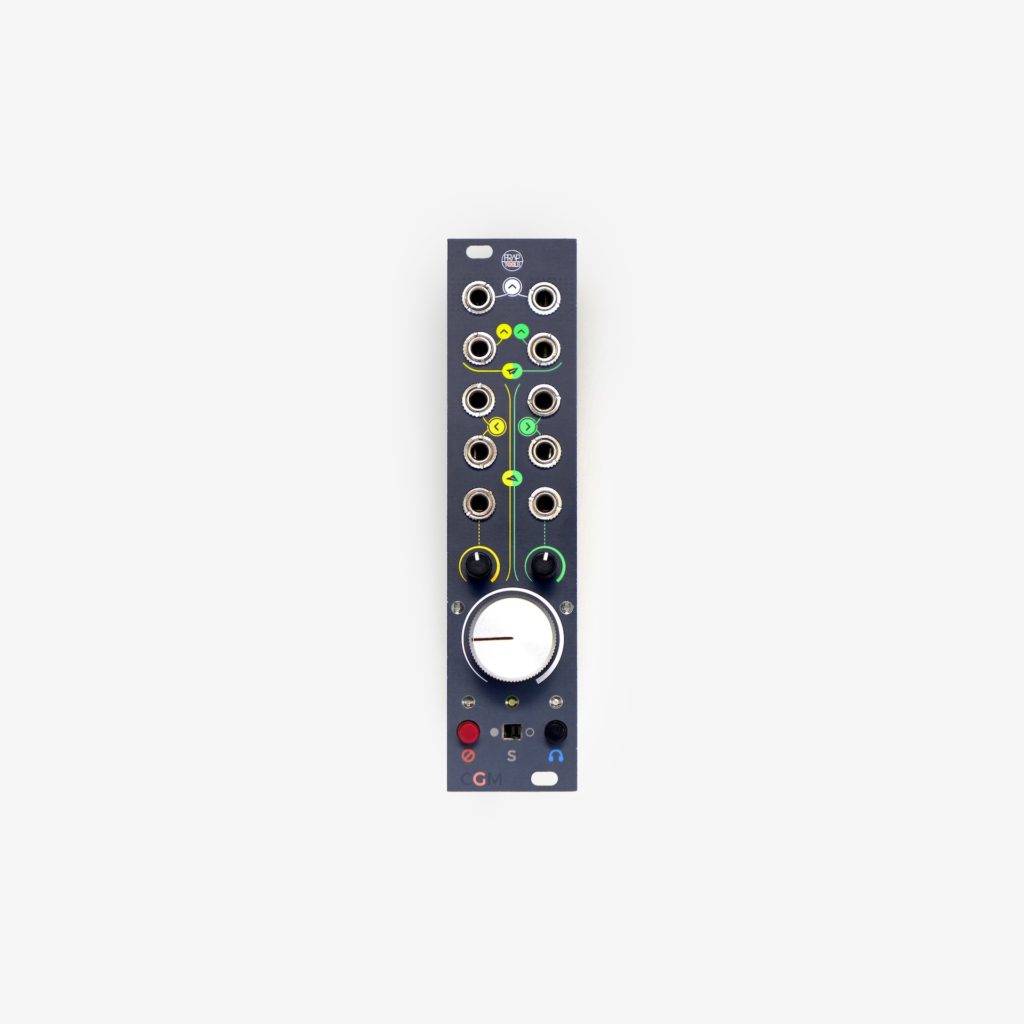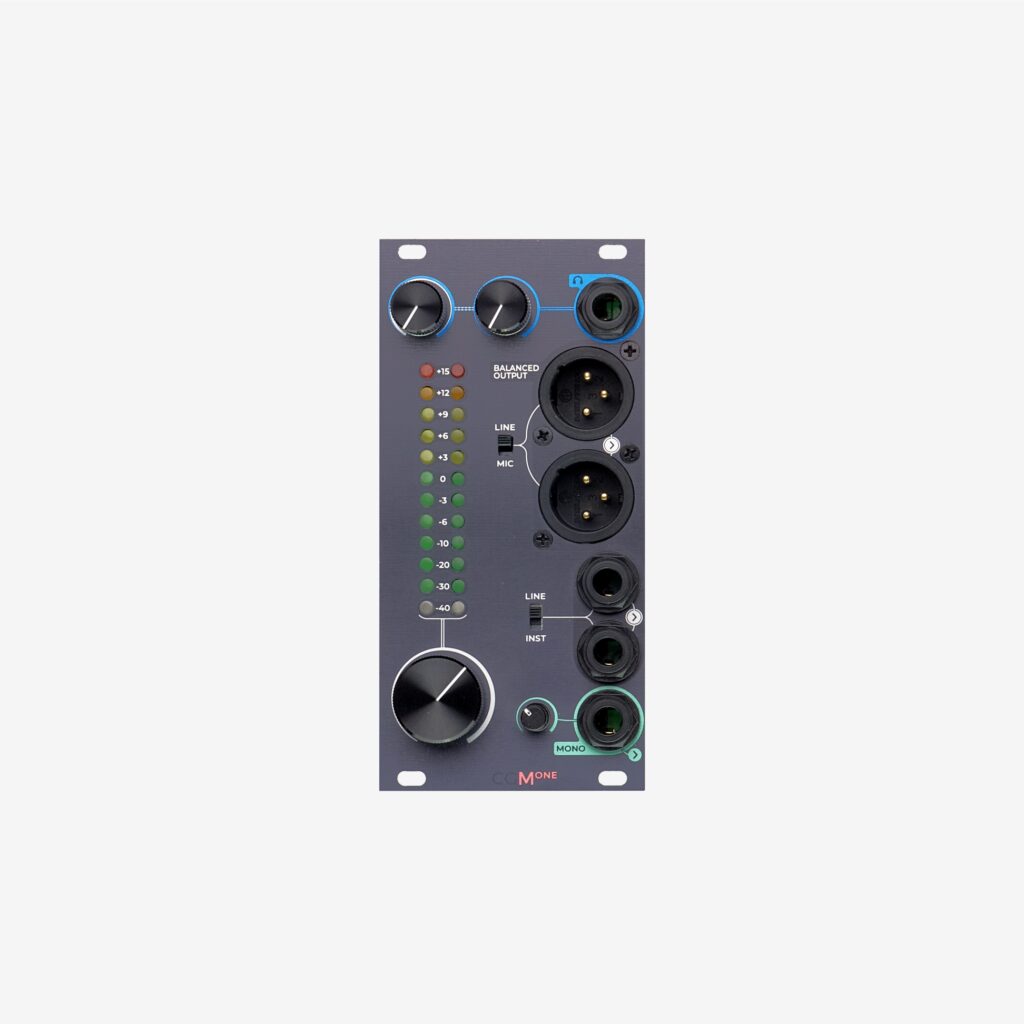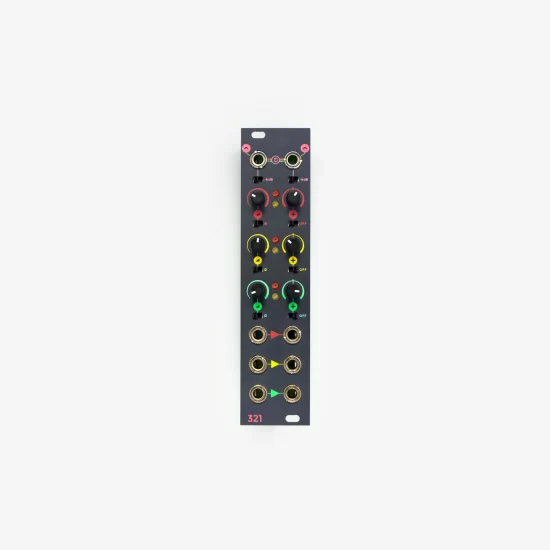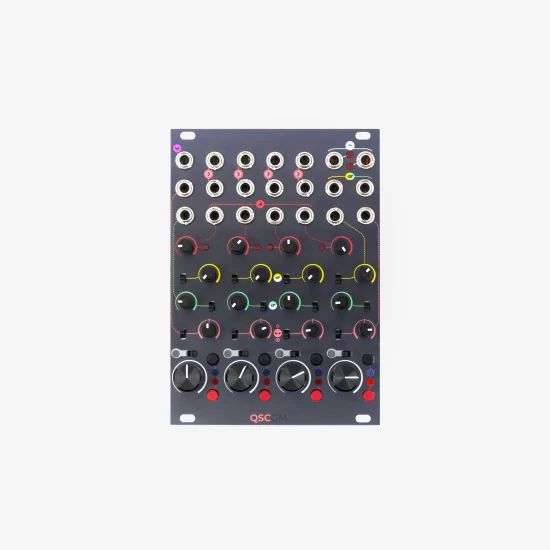Description
The CGM Creative Mixer is a modular mixing solution for Eurorack systems. It breaks down the main parts of a classic mixer console into three module families (channels, groups, and masters) and adds plenty of CV modulations to them.
It is an ever-growing mixing ecosystem designed to suit every mixing situation.
The CGM works by connecting its modules through IDC sockets on their PCBs, but some modules work both as stand-alone components and as parts of larger setups.
The various modules share audio, power, and controls through the IDC cables on the back.
You can connect up to eight members of the channel family to a group and up to four groups to a master, for a total of 128 channels in the current largest configuration.
Key Features
We designed the CGM to bring a professional audio console to the Eurorack world.
It guarantees excellent signal treatment, plenty of headroom, and a warm, musical saturation on every module (yes, even on the master!).
Thanks to its modular architecture, you can combine the CGM modules in many configurations, from smaller, compact cases to behemoth-like studio systems.
The body and soul of modular synthesizers is control voltage, so we equipped the CGM with a wide array of CV inputs.
In this way, you can animate your compositions and treat your mixer as an actual musical instrument.
Channel Family
With the channel modules, your Eurorack sound enters the CGM circuit and begins its road to the outside world.
From here, you can define the input gain, the volume in the mix, the effect sends, and the pan level.
According to the module, you can voltage-control some or all of these parameters.
High-standard VCAs with plenty of headroom guarantee crystalline sound treatment, but you can push the input gain to the limit and obtain a smooth and warm saturation.
As of today, there are two members in the channel family.
Group Family
The group is the first section of the CGM that mixes the signals and makes some of the channels’ functionalities effective. It then routes the channels’ sum to the Master module (if present).
With a group, you can mix up to eight channels (of either kind), take advantage of the Safe Solo function, and handle their effect routing through two mono sends and two stereo returns.
You can easily use the group as your latest stage in the audio chain in smaller setups thanks to its Group Outputs.
Master Family
The master section is the gateway to the outside world.
With a master module, you can mix up to four groups. Since every group can mix up to eight channel modules, a master can handle 32 channels. If such channels are QSCs, the largest possible configuration is a mixer of 128 total channels.
Thanks to its headphones output, the master allows you to take advantage of the pre-fader listening function and use the channels and groups to their full potential.
Learn
Learn
Learn
FAQ
A. Use
Our modules are packed with high-quality components that demand a proper power supply and can get sensibly warm.
That is its normal temperature and we can guarantee their performance.
You always need at least one group if you plan to incorporate a master module in your setup. It is not possible to connect any channel module directly to a master module.
The CGM is designed to let you connect up to eight channels (C or QSC) to one group (G), but there is no way of connecting the same channels to two or more groups.
Yes, to take advantage of the Master module’s functions (PFL, headphones, final gain stage), you need at least one group.
We designed the group (G) module together with the classic mono channel (C), which is 6HP wide. After the QSC release, we developed a new Link System with wider plugs that allow you to connect more QSCs in a row.
If you need to connect more QSCs, check your local shop for cable availability!
If you just need to connect a QSC, the classic group-to-channel cable works great, too.
If you experience an abnormal panning on the CGM, check your case’s power supply and your system’s overall power consumption. We experienced that the CGM system sometimes has trouble working in a system close to its maximum Ampère output. An unbalanced power supply may cause the audio to be louder on one channel than on the other.
Try staying below 80% of the total amperage or switch to a more powerful PSU to solve this issue.
The Mute button closes the first VCA of the channel, thus preventing the sound from being routed through all the other VCAs (FX sends, pan, main fader).
The Solo in Place button isolates some channels and mutes the others. However, the mute function it performs is different since it affects the channel after the fader: the sound will still be routed to any pre-fader VCA such as Direct Output and FX Sends (when set to Pre-Fader Mode).
In other words, the Mute button works pre-fader, while the Solo in Place works post-fader.
